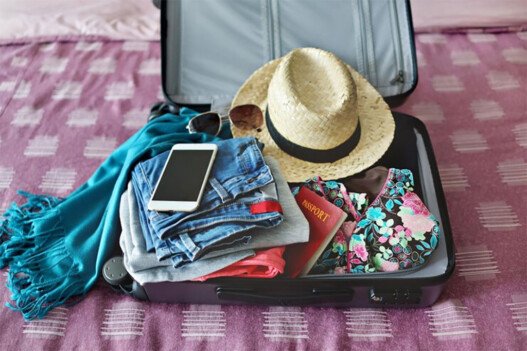Bali—just the name evokes dreams of sun-drenched beaches, tranquil temples, rice paddies shimmering in the sunlight, and vibrant nightlife. But for many travelers, especially those on a budget, a Bali vacation may seem out of reach. The good news? It’s not only possible to enjoy Bali on a budget—it can also be one of the most fulfilling ways to explore this magical island.
This article reveals five essential budget hacks that can make your Bali adventure unforgettable and affordable. Whether you’re a solo backpacker, a couple looking for a romantic escape, or a family on a tight budget, these strategies will help you stretch your money while still experiencing the best of Bali.
🧭 1. Timing is Everything: Travel Off-Peak
When it comes to budget travel, timing can dramatically affect your overall cost. Bali is a year-round destination, but traveling during the off-peak seasons can mean huge savings.
🌧️ Low Season = Low Prices
Bali’s wet season typically runs from November to March, and while occasional rain showers are common, they usually don’t last all day. During this period, accommodation prices can drop by up to 50%, and flights are generally cheaper too. Restaurants and tourist spots are less crowded, giving you a more authentic experience.
💼 Flexible Dates
Use flight search engines that allow you to compare prices over a month. Shifting your trip by even a few days can significantly reduce costs. Mid-week flights are usually less expensive than weekend ones.
🔔 Bonus Tip
Avoid traveling during Australian school holidays, as Bali is a popular destination for Australians. Prices often surge during these periods due to increased demand.
🏠 2. Where to Stay: Budget-Friendly Accommodation
Accommodation often takes the biggest chunk of your travel budget. Luckily, Bali offers a range of affordable options without compromising on comfort.
🛌 Guesthouses and Homestays
Skip the five-star resorts and look for guesthouses or homestays. These are often family-run establishments that provide a cozy, cultural experience. Many offer air conditioning, private bathrooms, and even breakfast—all for under $20 a night.
Popular areas for budget accommodation:
- Ubud: Cultural heart with lush greenery.
- Canggu: Surfing paradise with hip cafes.
- Sanur: Quiet beaches, perfect for families.
🏨 Hostels with Style
Bali’s backpacker scene is thriving, and hostels here are not your average bunk-bed experiences. Many come with pools, co-working spaces, yoga classes, and even rooftop bars.
Recommended budget hostels:
- Tribal Hostel (Canggu)
- In Da Lodge (Ubud)
- M Boutique Hostel (Seminyak)
🏠 Airbnb and Monthly Rentals
For longer stays, consider renting a room or villa through Airbnb or local Facebook groups. Monthly rentals can be surprisingly cheap, especially if you’re staying away from tourist hotspots.
🍽️ 3. Eat Like a Local: Delicious, Cheap, and Authentic
Food in Bali can be both exquisite and affordable—if you know where to go.
🍛 Warungs: The Local Way to Dine
Warungs are small family-owned eateries that offer home-cooked Indonesian meals at incredibly low prices. A hearty plate of nasi campur (mixed rice with sides) can cost as little as $1.50 to $3.
Popular warungs:
- Warung Babi Guling Pak Malen (Seminyak)
- Warung Makan Bu Rus (Ubud)
- Warung Murah (Legian)
🛍️ Markets and Street Food
Night markets like Sanur Night Market or Gianyar Market are great for tasting Bali’s street food culture. Try satay, martabak, bakso, or the famous nasi goreng.
☕ Coffee & Smoothie Spots
Bali is also known for its coffee and tropical drinks. While beachfront cafes can be pricey, inland spots in Ubud or Canggu often offer excellent lattes, smoothie bowls, and free Wi-Fi—perfect for digital nomads.
🛵 4. Getting Around: Cheap and Efficient Transport
Transportation in Bali is where many travelers overspend, often due to lack of information or last-minute decisions.
🛵 Rent a Scooter
Renting a scooter is the most economical and flexible way to get around Bali. Daily rentals range from $4 to $7, and weekly or monthly deals are even cheaper.
Tip: Always wear a helmet and carry an international driving permit. Traffic in Bali can be chaotic, so drive cautiously.
🚕 Use Ride-Hailing Apps
For those not comfortable on a scooter, GoJek and Grab are Indonesia’s versions of Uber. They offer scooter taxis and car rides at significantly lower prices than traditional taxis.
🚐 Shared Transfers and Buses
For intercity travel, consider Perama Tour or Kura-Kura Bus, which operate shared transfers to major tourist areas. These are cost-effective and safer than hailing a random taxi.
🧘 5. Free and Low-Cost Activities You’ll Love
Bali offers countless experiences that don’t break the bank—and many are free!
🏞️ Explore Nature
- Tegallalang Rice Terraces (Ubud): A small entrance fee gives you access to one of Bali’s most iconic views.
- Campuhan Ridge Walk: Free hike with panoramic views.
- Hidden Waterfalls: Tukad Cepung, Tegenungan, and Sekumpul offer refreshing escapes for a tiny entrance fee.
🕍 Visit Temples
Temples like Tirta Empul, Goa Gajah, and Tanah Lot usually require a small donation or entrance fee. Dress modestly and bring a sarong (or rent one on-site).
🧘 Affordable Yoga & Wellness
Ubud is known for yoga retreats, but drop-in classes can be very budget-friendly (as low as $5). Many hostels and guesthouses offer free or discounted classes for guests.
🏖️ Beaches on a Budget
Bali’s beaches are free, beautiful, and plentiful:
- Kuta Beach: Great for surfing.
- Padang Padang: Scenic and quiet.
- Nusa Dua: Clean and family-friendly.
🎭 Cultural Shows and Local Events
Keep an eye out for free cultural performances at temples and community centers, especially during religious festivals like Galungan or Nyepi.
💼 Pro-Level Travel Tips
✈️ Book Flights Smart
Use fare alerts, browse in incognito mode, and book flights during airline sales. Round trips from Southeast Asia to Bali can dip below $100 during promotions.
🏧 Avoid High Exchange Fees
Use international cards that don’t charge foreign transaction fees, or withdraw large amounts from ATMs to minimize charges. Money changers with “No Commission” and exact rates are your best bet.
💬 Learn Basic Bahasa Indonesia
Knowing a few local phrases goes a long way in negotiating, ordering food, and making friends.
Useful phrases:
- Terima kasih = Thank you
- Berapa harganya? = How much?
- Saya tidak mengerti = I don’t understand
🤝 Bargain Respectfully
In markets and with tour vendors, bargaining is expected. Just remember to smile and keep it friendly.
🎒 Sample Budget Breakdown (7-Day Trip for One)
| Category |
Daily Cost (USD) |
Total (USD) |
| Accommodation |
$15 |
$105 |
| Food & Drinks |
$10 |
$70 |
| Transport |
$5 |
$35 |
| Activities |
$5 |
$35 |
| Miscellaneous |
$5 |
$35 |
| Total |
|
$280 |
With smart planning, you can enjoy a full week in Bali for under $300!
🌟 Final Thoughts
Bali is proof that paradise doesn’t have to come with a hefty price tag. With a little preparation, flexibility, and an adventurous spirit, you can have a rich, rewarding experience without draining your bank account.
From feasting on mouthwatering nasi goreng at a roadside warung to catching a sunrise from Mount Batur or practicing yoga in a jungle studio—Bali is as diverse as it is affordable.
So pack your bags, grab your sunscreen, and get ready for the budget vacation of a lifetime. Bali is calling, and it doesn’t care how much is in your wallet—only that you’re ready to explore.









